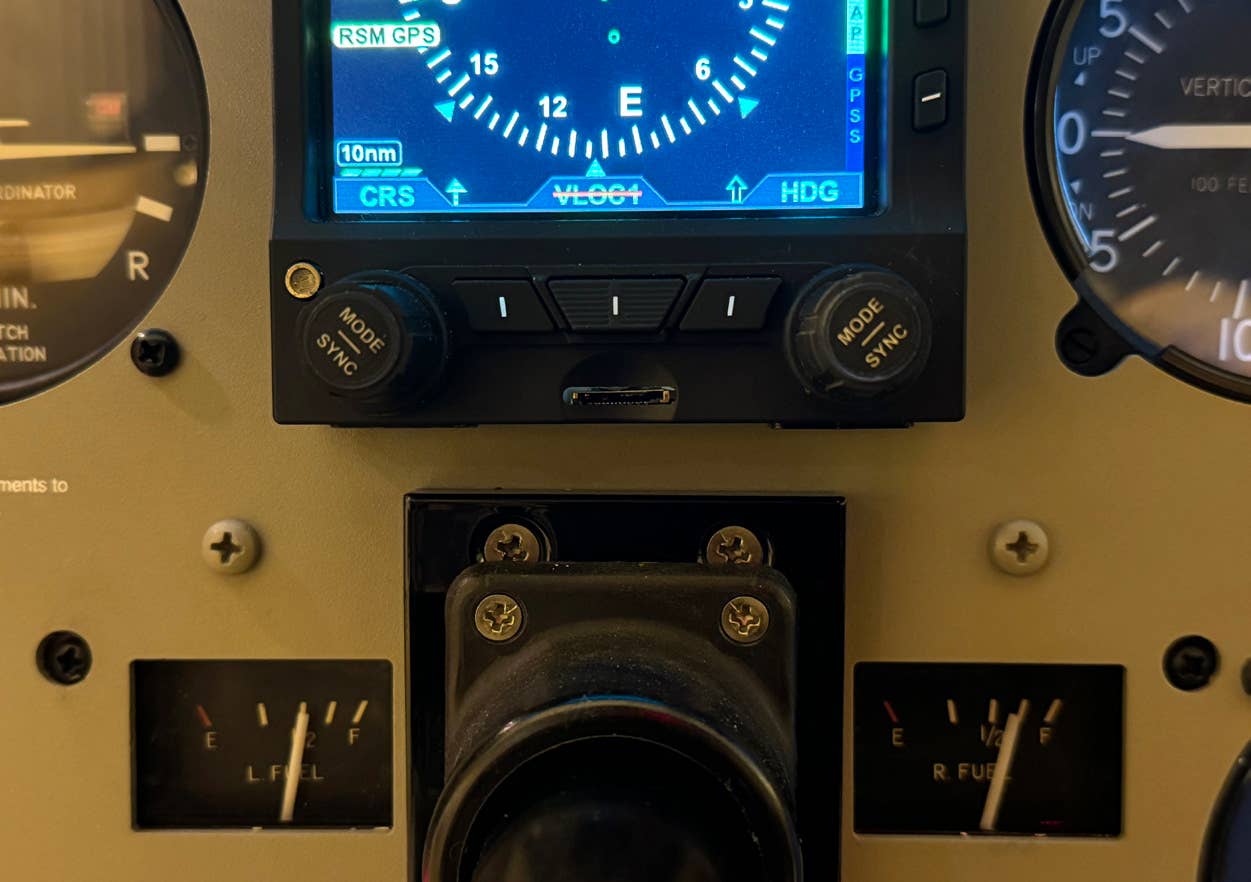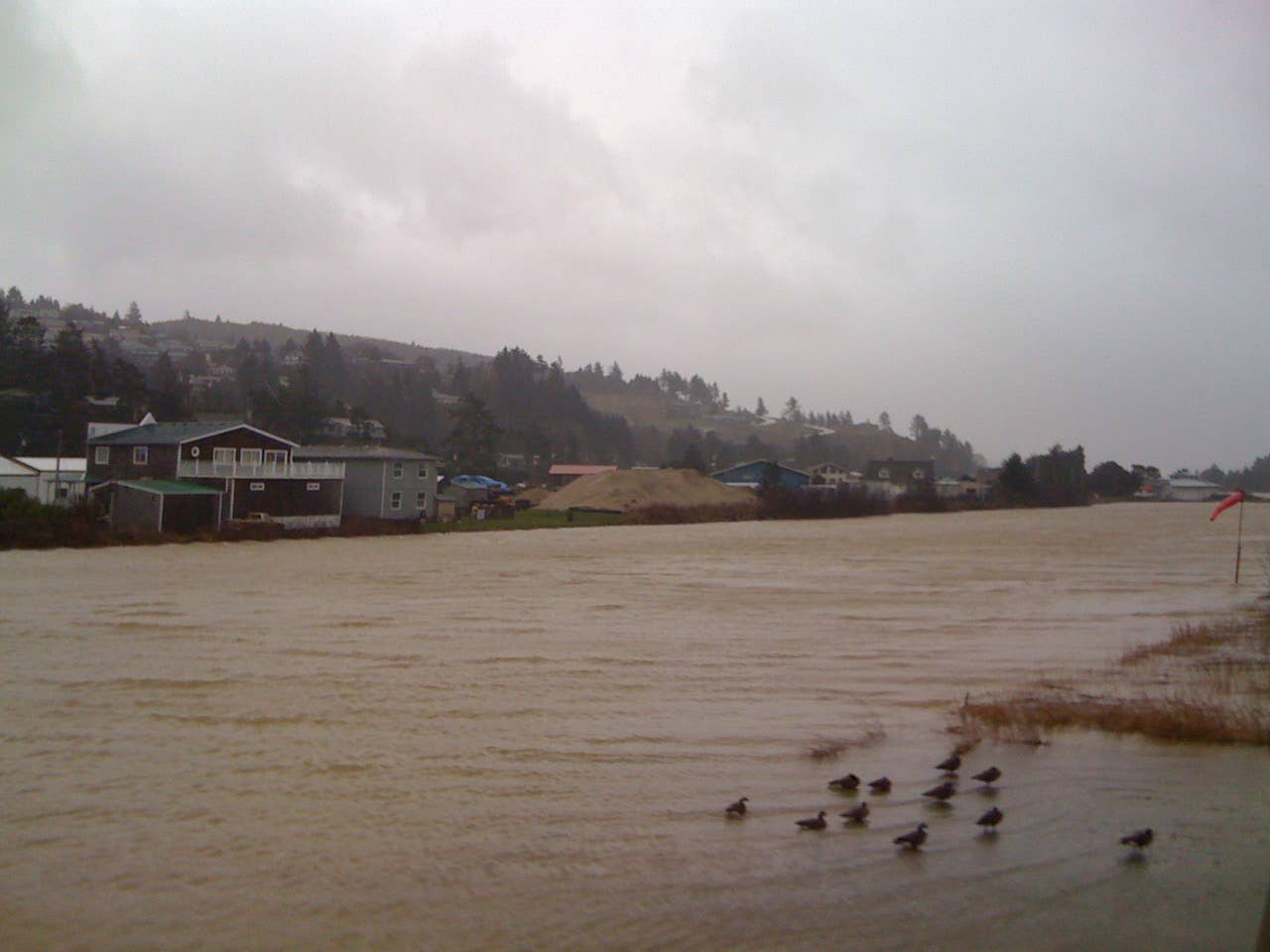
A Google Earth shot of the Tieton State Airport at Rimrock Lake in Washington.
Driving a car is not that difficult. The instructor may have a few tense moments while teaching someone how to drive, but once you have a few miles under your tires, hopping in the car is not a stress-inducing event. Aside from a few people who are into off-road driving, most people never drive on anything but smooth roads with at most a few rough patches. You don't need any special training to drive in the mountains, and weather is not much of a problem either. If it starts raining or snowing, all you have to do is slow down and be extra cautious. If conditions get too bad, you can pull off the road and stop. While most people drive every day, if you miss a few days, or even a few weeks, you have no problem the next time you drive. Most cars are so similar that you can rent a car you have never driven before, adjust the mirrors and head out without any problem other than perhaps finding the switch to put the window down at the rental-lot exit booth.
Flying an airplane is a very different experience. To be licensed as a private pilot, you must fly at least 40 hours, with at least 20 hours of dual instruction. Most people require half again as much time. Want to fly in the clouds? Tack on another 40 hours or more of instruction. Even at that point, the instrument-rated private pilot is hardly ready for all that aviation has to throw at him. Every airplane has different systems and different flight characteristics to the point that a pilot needs to fly with an instructor before operating an unfamiliar airplane for the first time. Airports vary greatly from long, wide runways to short, narrow mountain strips nestled in the trees. Taking off or landing on a gusty day is much more difficult than on a calm day, and controlling an airplane bouncing down an ILS approach in a storm, with the roar of the rain making it hard to hear the controller even with a headset on, is a whole new challenge.
Last month I reviewed statistics that show almost half of all pilot-related accidents involve the basic skills of taking off and landing, and many of the fatal accidents happen as a result of poorly executed instrument approaches. I think the problem is that pilots often treat flying like driving a car. We have somewhere to go; we have a license and the keys to an airplane in our pocket, so off we go, without carefully assessing whether we are sufficiently trained, current, competent and other-wise prepared for the challenges we will likely face on that flight.
The NTSB recently released the probable cause on two accidents that seem to fit into this category. In the first one, a 37-year-old pilot taking his son and daughter to a family picnic at Rimrock Lake northwest of Yakima, Washington, crashed while executing a go-around. At first glance, the Tieton State Airport at Rimrock Lake does not look that difficult. The turf runway is 2,509 feet long by 140 feet wide and is maintained by the Washington State Department of Transportation (DOT). The approach from the southwest over the lake does not have any obstacles, with the end of the runway located at the edge of the lake. Because the runway slopes uphill to the northeast and there are tall trees and a mountain off the northeast end of the runway, the Washington State DOT website reports that "most folks seem to prefer to ignore the wind and land uphill to the east and depart downhill to the west."
The pilot lived in Yakima, only 20 miles away, and worked part time at the FBO where he rented the Cessna 172. He had earned his private pilot certificate a year earlier. This was his first flight in two months, and he had flown only two hours in the preceding 90 days. In fact, his logbook showed a total of only 79 hours, so it does not appear that he had flown much since he completed his training. But even with his low time and lack of recent experience, landing on a 2,500-foot runway with an unobstructed approach over the water should not be too difficult. However, he was trying to land in the middle of the afternoon. The airport, at an elevation of 2,964 feet, had a density altitude of 5,000 feet, and witnesses reported that the winds were gusting 20 to 30 mph out of the west. His wife, who had driven to the airport and was waiting for him to land, reported that "she was concerned that her husband may have difficulty landing in such conditions."
Even a very experienced pilot would face a difficult decision under those circumstances. Do you try to land uphill with a clear approach but dealing with a strong, gusty tailwind, or do you land downhill into the wind, approaching in gusty conditions over 100-foot-tall trees beside a mountain? Given those choices, many pilots would decide to return to Yakima and try to land at Tieton Airport another day, perhaps earlier in the day when it would be cooler and the winds would not be so strong.
The NTSB report states that the pilot was observed approaching to the northeast too high and fast, which would be typical for an inexperienced pilot landing in a strong tailwind. As he was nearing the departure end of the runway, he finally added power to go around. The strong nose-up pitching moment from adding power with the flaps deployed, combined with the higher-than-anticipated ground speed and the tall trees and a mountain at the end of the runway filling the windscreen, was more than the pilot could handle. A witness observed that "the angle of attack of the airplane was such that she could see the full profile of the upper wing surface." The airplane hit a tree 1,300 feet beyond the end of the runway and came to rest about 1,000 feet beyond that point. The pilot and his 13-year-old son were killed, but his 5-year-old daughter, who was strapped into a child's safety seat, survived with serious injuries.
The second accident involved an instrument-rated private pilot who was reported to have more than 4,000 hours total time, and more than 3,000 hours in the Beechcraft Bonanza he was flying. The pilot and two passengers were approaching their destination at Abraham Lincoln Capital Airport near Springfield, Illinois. When the controller at Champaign approach control informed him that airports in his vicinity were VFR but there was precipitation in the area, he stated that he wanted to remain VFR at 2,500 feet, but that he could accept an IFR clearance if necessary. A few minutes later he informed the controller that he was entering IMC and requested an IFR clearance to his destination.
The weather at Springfield was not that bad, with a ceiling of 500 feet, 2.5 miles visibility and winds from 120 degrees at 11 knots. After issuing vectors to join the localizer for the ILS Runway 04 approach at Springfield, the controller was unable to contact the pilot for almost five minutes. Finally the pilot re-established contact and said he "flipped off a switch a while ago" and he was "getting a little bit nervous." The pilot also did not initially respond to his final approach clearance. When he contacted the tower as instructed, he said he had a problem. After several garbled communications, there were no further transmissions from the pilot. The NTSB report stated that the radar track showed the airplane passing through the localizer centerline and then making a rapid right turn back toward the centerline while descending from 2,400 feet to 1,300 feet. The airplane then rapidly climbed to 2,900 feet, descended to 1,800 feet and then climbed back to 2,700 feet before disappearing from the radar.
Why would an experienced pilot with an instrument rating lose control while flying an ILS in weather well above minimums with no storms in the area? Investigators determined that while the pilot had flown 41 hours over the previous six months, he had not flown any instrument approaches during that time. In fact, his last flight review had been completed 2½ years before the accident, and there was no record of him receiving any flight instruction or instrument proficiency checks since that time.
Two pilots — one at the beginning of his flying career, one with thousands of hours of experience. Yet each of these pilots tried to operate an airplane in conditions they were just not equipped to handle, the first due to lack of overall experience, the second due to lack of currency. The first pilot had undoubtedly driven to Rimrock Lake many times for picnics with his family, yet he discovered that flying to Rimrock Lake on a beautiful but windy afternoon was beyond what he was equipped to handle. The second pilot had flown the Beechcraft Bonanza for many years and had successfully completed other instrument approaches. However, he discovered that flying an ILS when he had not done one in the recent past was not only against the regulations, but it was also fatal.
The basics of flying an airplane are very simple and easily learned. Beyond that, however, there are so many interwoven variables involving the pilot, the airplane, the airport and the weather that it is easy to miss or ignore one or more risk factors that can combine to result in a fatal outcome. These accidents emphasize how important it is for each of us to be alert for any temptation to treat an airplane like we would a car, rather than carefully assessing our own experience, currency and capabilities in light of the risks we might face on that flight.

Sign-up for newsletters & special offers!
Get the latest FLYING stories & special offers delivered directly to your inbox






